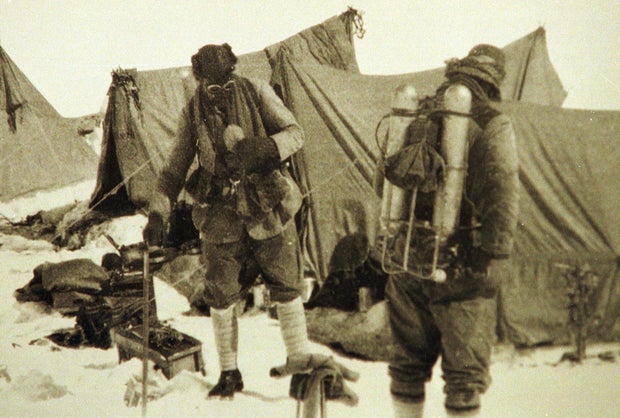CBS News
Musk, Tesla unveil long-awaited “Cybercab” robotaxi

Los Angeles — Tesla unveiled its long-awaited robotaxi at a Hollywood studio Thursday night, though fans of the electric vehicle maker will have to wait until at least 2026 before it’s available.
CEO Elon Musk pulled up to a stage at the Warner Bros. studio lot in one of the company’s “Cybercabs,” telling the crowd the sleek, AI-powered vehicles don’t have steering wheels or pedals. He also expressed confidence in the progress the company has made on autonomous driving technology that makes it possible for vehicles to drive without human intervention.
Tesla / Handout via REUTERS
Tesla began selling the software, which is called “Full Self-Driving,” nine years ago. But there are doubts about its reliability.
“We’ll move from supervised Full Self-Driving to unsupervised Full Self-Driving, where you can fall asleep and wake up at your destination,” he said. “It’s going to be a glorious future.”
Tesla expects the Cybercabs to cost under $30,000, Musk said. He estimated that the vehicles would become available in 2026, then added “before 2027.”
The company also expects to make the Full Self-Driving technology available on its popular Model 3 and Model Y vehicles in Texas and California next year.
“If they’re going to eventually get to robotaxis, they first need to have success with the unsupervised FSD at the current lineup,” said Seth Goldstein, equity strategist at Morningstar Research. “Tonight’s event showed that they’re ready to take that step forward.”
Tesla had 20 or so Cybercabs on hand and offered event attendees the opportunity to take rides inside the movie studio lot – not on Los Angeles’ roads.
At the presentation, which was dubbed “We, Robot” and was streamed live on Tesla’s website and X, Musk also revealed a sleek minibus-looking vehicle that, like the Cybercab, would be self-driving and can carry up to 20 passengers.
The company also trotted out several of its black and white Optimus humanoid robots, which walked a few feet from the attendees before showing off dance moves in a futuristic-looking gazebo.
Tesla / Handout via REUTERS
Musk estimated that the robots would cost between $28,000-$30,000 and would be able to babysit, mow lawns and fetch groceries, among other tasks.
“Whatever you can think of, it will do,” he said.
The unveiling of the Cybercab comes as Musk tries to persuade investors that his company is more about artificial intelligence and robotics as it struggles to sell its core products, an aging lineup of electric vehicles.
Tesla’s model lineup is struggling and isn’t likely to be refreshed until late next year at the earliest, TD Cowen analyst Jeff Osborne wrote in a research note last week.
Osborne also noted that, in TD Cowen’s view, the “politicization of Elon” is tarnishing the Tesla brand among Democratic buyers in the U.S.
Musk has endorsed former president and Republican presidential candidate Donald Trump and has pushed many conservative causes. Last weekend, he joined Trump at a Pennsylvania rally.
Musk has been saying for more than five years that a fleet of robotaxis is near, enabling Tesla owners to make money by having their cars carry passengers while they’re not being used by their owners.
But he’s acknowledged that past predictions for the use of autonomous driving proved too optimistic. In 2019, he promised the fleet of autonomous vehicles by the end of 2020.
The announcement comes as U.S. safety regulators are investigating Full Self Driving and Autopilot based on evidence that it has a weak system for making sure human drivers pay attention.
In addition, the U.S. National Highway Traffic Safety Administration forced Tesla to recall Full Self-Driving in February because it enabled speeding and violated other traffic laws, especially near intersections. Tesla was to fix the problems with an online software update.
Last April in Snohomish County, Washington, near Seattle, a Tesla using Full Self-Driving hit and killed a motorcyclist, authorities said. The Tesla driver told authorities he was using the system while looking at his phone when the car rear-ended the motorcyclist. The motorcyclist was pronounced dead at the scene, authorities said.
NHTSA says it’s evaluating information on the fatal crash from Tesla and law enforcement officials.
The Justice Department also has sought information from Tesla about Full Self-Driving and Autopilot, as well as other items.
CBS News
Almost 10 million pounds of meat and poultry dishes recalled due to possible listeria contamination

A company is recalling nearly 10 million pounds of meat and poultry products made at an Oklahoma plant because they may be contaminated with listeria bacteria, which can cause illness and death.
BrucePac of Woodburn, Oregon, recalled the roughly 5,000 tons of ready-to-eat foods this week after U.S. Agriculture Department officials detected listeria in samples of poultry during routine testing. Further tests identified BrucePac chicken as the source. The recall includes 75 meat and chicken products.
The foods include products like grilled chicken breast strips that were made at the company’s facility in Durant, Oklahoma. They were produced between June 19 and Oct. 8 and shipped to restaurants, food service vendors and other sites nationwide, government officials said.
The products have a best-by date of June 19, 2025 to Oct. 8, 2025. Officials said they’re concerned that the foods may still be available for use or stored in refrigerators or freezers. The products should be thrown away, they stressed.
There are no confirmed reports of illness linked to the recall.
Eating foods contaminated with listeria can cause potentially serious illness. About 1,600 people are infected with listeria bacteria each year in the U.S. and about 260 die, according to the U.S. Centers for Disease Control and Prevention.
Listeria infections typically cause fever, muscle aches and tiredness and may cause stiff neck, confusion, loss of balance and convulsions. Symptoms can occur quickly or to up to 10 weeks after eating contaminated food. The infections are especially dangerous for older people, those with weakened immune systems or who are pregnant.
CBS News
Human remains found on Mount Everest apparently belong to famed climber who vanished 100 years ago

A documentary team discovered human remains on Mount Everest apparently belonging to a man who went missing while trying to summit the peak 100 years ago, National Geographic magazine reported Friday.
Climate change is thinning snow and ice around the Himalayas, increasingly exposing the bodies of mountaineers who died chasing their dream of scaling the world’s highest mountain.
Briton Andrew Irvine went missing in 1924 alongside climbing partner George Mallory as the pair attempted to be the first to reach Everest’s summit, 8,848 meters (29,029 feet) above sea level.
Mallory’s body was found in 1999 but clues about Irvine’s fate were elusive until a National Geographic team discovered a boot, still clothing the remains of a foot, on the peak’s Central Rongbuk Glacier.
On closer inspection, they found a sock with “a red label that has A.C. IRVINE stitched into it,” the magazine reported.
/ AP
The discovery could give further clues as to the location of the team’s personal effects and may help resolve one of mountaineering’s most enduring mysteries: whether Irvine and Mallory ever managed to reach the summit.
That could confirm Irvine and Mallory as the first to successfully scale the peak, nearly three decades before the first currently recognized summit in 1953 by climbers Edmund Hillary and Tenzing Norgay.
“It tells the whole story about what probably happened,” Irvine’s great-niece Julie Summers told National Geographic.
The first documented ascent of Everest came nearly three decades later when New Zealander Edmund Hillary and Nepalese Sherpa Tenzing Norgay scaled the mountain on May 29, 1953. In 1963, Jim Whittaker became the first American to reach the summit.
Hundreds of climbers have died on Everest
Members of the Irvine family reportedly offered to share DNA samples to confirm the identity of the remains.
Irvine was 22 when he went missing.
He, along with Mallory, was last spotted by one of the members of their expedition on the afternoon of June 8, 1924, after beginning their final ascent to the summit that morning.
Earlier this year, Mallory’s final letter to his wife was digitized for the first time and published online by Cambridge University. In the letter, he wrote that his chances of reaching the world’s highest peak were “50 to 1 against us.”
Irvine is believed to have been carrying a vest camera — the discovery of which could rewrite mountaineering history.
Photographer and director Jimmy Chin, who was part of the National Geographic team, believes the discovery “certainly reduces the search area” for the elusive camera.
More than 300 people have perished on the mountain since expeditions started in the 1920s.
Some are hidden by snow or swallowed down deep crevasses.
Others, still in their colorful climbing gear, have become landmarks en route to the summit and bestowed with gallows humor nicknames, including “Green Boots” and “Sleeping Beauty.”
In June, five frozen bodies were retrieved from Mount Everest — including one that was just skeletal remains — as part of Nepal’s mountain clean-up campaign on Everest and adjoining peaks Lhotse and Nuptse.
CBS News
Drownings of 2 Navy SEALS were preventable, military probe finds

Washington — Two U.S. Navy SEALs drowned as they tried to climb aboard a ship carrying illicit Iranian-made weapons to Yemen because of glaring training failures and a lack of understanding about what to do after falling into deep, turbulent waters, according to a military investigation into the January deaths.
The review concluded that the drownings of Chief Special Warfare Operator Christopher J. Chambers and Navy Special Warfare Operator 1st Class Nathan Gage Ingram could have been prevented.
But both sank quickly in the high seas off the coast of Somalia, weighed down by heavy equipment they were carrying and not knowing or disregarding concerns that their flotation devices couldn’t compensate for the additional weight. Both were lost at sea.
U.S. Navy
The highly critical and heavily redacted report – written by a Navy officer from outside Naval Special Warfare Command, which oversees the SEALs – concluded there were “deficiencies, gaps and inconsistencies” in training, policies, tactics and procedures as well as “conflicting guidance” on when and how to use emergency flotation devices and extra buoyancy material that could have kept them alive.
The Associated Press obtained the report upon request before its public release.
The mission’s goal was to intercept weapons headed to the Iranian-backed Houthis in Yemen, who have been launching missile and drone attacks against commercial and U.S. Navy ships in the Red Sea and Gulf of Aden since the Israel-Hamas war in Gaza began a year ago. U.S. retaliatory strikes haven’t deterred their assaults.
Chambers and Ingram, members of SEAL Team 3, died during a nighttime mission to board an unflagged ship in the Arabian Sea. Their names were redacted in the report, but officials have confirmed Chambers slipped and fell as he was climbing onto the ship’s deck and Ingram jumped in to try to save him.
“Encumbered by the weight of each individual’s gear, neither their physical capability nor emergency supplemental flotations devices, if activated, were sufficient to keep them at the surface,” Rear Adm. Michael DeVore wrote in the report.
The report said Chambers was “intermittently” at the surface for 26 seconds after his fall and Ingram was at the surface for about 32 seconds.
“The entire tragic event elapsed in just 47 seconds and two NSW warriors were lost to the sea,” DeVore wrote, referring to the Naval Special Warfare Command.
Flotation equipment that was properly maintained, working well and used correctly would have been able to keep them afloat until they were rescued, the report said. Other team members told investigators that while they knew the importance of their tactical flotation system – which includes two inflatable floats that attach to a belt and foam inserts that can be added – few had ever operated one in training and there is little instruction on how to wear it.
How Chambers and Ingram died
The report said the team was operating in 6- to 8-foot seas and, while the vessel they were boarding was rolling in the waves, the conditions were well within their abilities.
As time went on, however, the rolling increased, and Chambers tried to board by jumping from his combat craft’s engine compartment to the top rail of the ship they were boarding, the report said. Some of the commandos used an attachable ladder but because of the waves, others jumped to the top rail, which they said was within reach but slippery.
Chambers’ hands slipped off the rail and he fell 9 feet into the water. Based on video of the mission, he was able to grab the lower rung of the ladder but when he turned to try to get back to the combat craft, he was swept under by a wave.
Eleven seconds after he fell, Ingram jumped in. For at least 10 seconds, video shows they were above water intermittently and at times were able to grab a ladder extension that was submerged. But both were knocked about by waves. The last sighting of Chambers was about 26 seconds after he fell.
At one point, Ingram tried to climb back on the ladder but was overcome by a wave. He appeared to try to deploy his flotation device, but within two seconds, an unattached water wing was seen about a foot away from him. He also seemed to try to remove some of his equipment, but he slipped underwater and wasn’t seen again. The sea depth was about 12,000 feet.
Both were wearing body armor and Ingram was also carrying radio equipment that added as much as 40 more pounds. Each of the inflatable floats can lift a minimum of 40 pounds in seawater, the report said.
It said members of the SEAL team expressed “shock and disbelief” that Chambers, their strongest swimmer, couldn’t stay at the surface. The report concluded that the conflicting and meager guidance on the flotation devices may have left it to individuals to configure their buoyancy needs, potentially leading to mistakes.
While SEALs routinely conduct pre-mission “buddy checks” to review each other’s gear, it said Ingram’s flotation equipment may have been incorrectly attached and a more thorough buddy exam could have discovered that.
SEAL team members also told investigators that adding the foam inserts makes the flotation device more bulky and it becomes more difficult to climb or crawl.
The report said SEAL Team 3 members began prompt and appropriate man-overboard procedures “within seconds,” and there were two helicopters and two drones overhead providing surveillance, light and video for the mission.
After 10 days, the search was called off because of the water depth and low probability of finding the two.
“The Navy respects the sanctity of human remains and recognized the sea as a fit and final resting place,” the report said.
Chambers, 37, of Maryland, enlisted in the Navy in 2012 and graduated from SEAL training in 2014. Ingram, 27, of Texas, enlisted in 2019 and graduated from SEAL training in 2021.
Losses prompt training changes
In response to the investigation, Naval Special Warfare Command said changes are already being made to training and guidance.
It said the command is considering developing a force-wide policy to address water safety during maritime operations and is setting standard procedures for buoyancy requirements.
Other changes would refine man-overboard procedures, pre-mission checks and maintenance of flotation devices. It also said it’s looking into “fail safe” buoyancy equipment and plans to review safety processes.
Rear Adm. Keith Davids, who headed the command at the time of the mission, said it would learn from the tragic deaths and “doggedly pursue” recommended changes. Davids left the job in August in a routine change of command and is in the process of retiring.
The report recommends that Ingram receive a commendation for heroism for giving his life while trying to save his teammate. That recommendation is under review. Both were posthumously promoted one rank.
According to a separate Defense Intelligence Agency report, the Jan. 11 mission seized Iranian “propulsion, guidance systems and warheads” for medium-range ballistic missiles and antiship cruise missiles destined for the Houthis.











